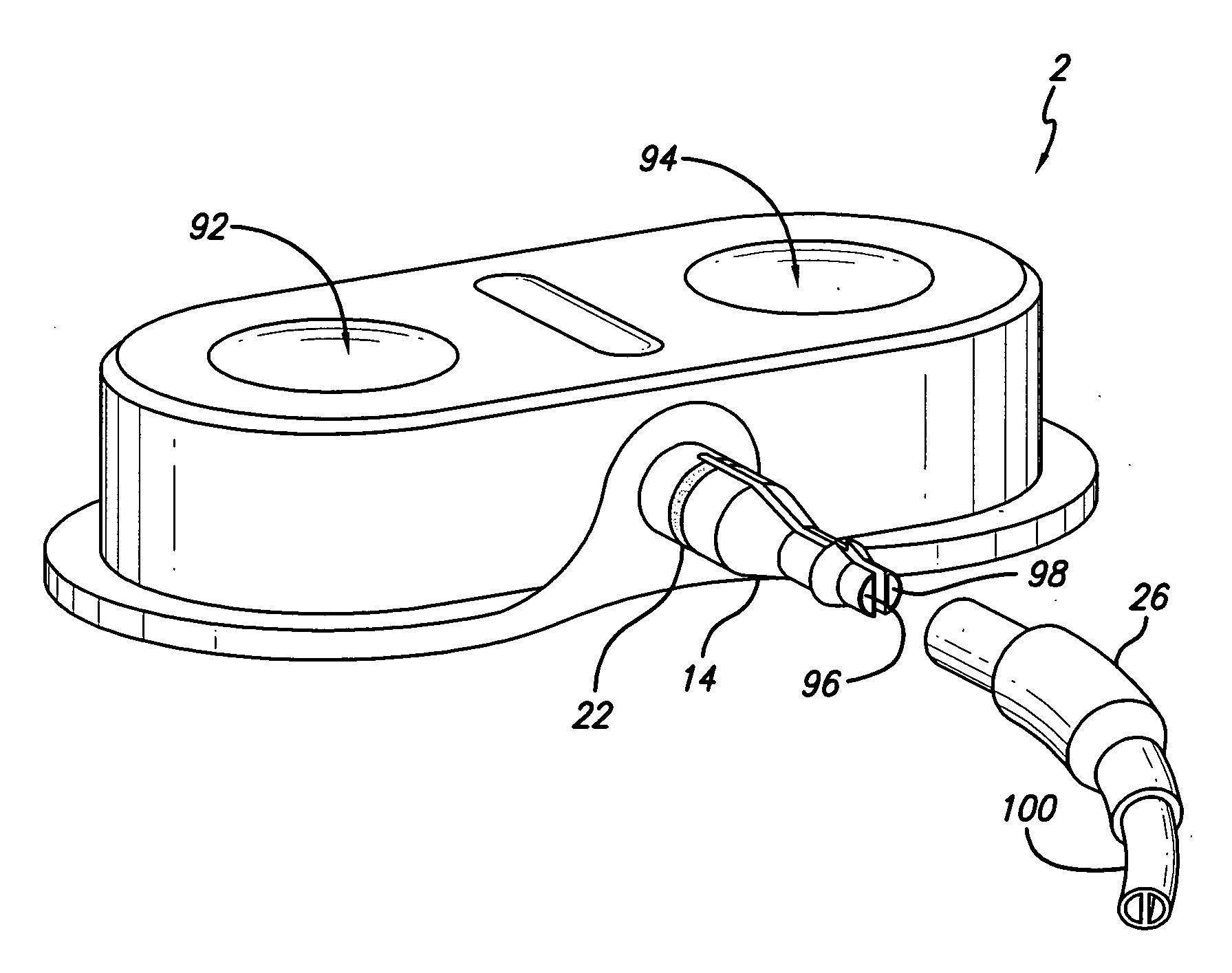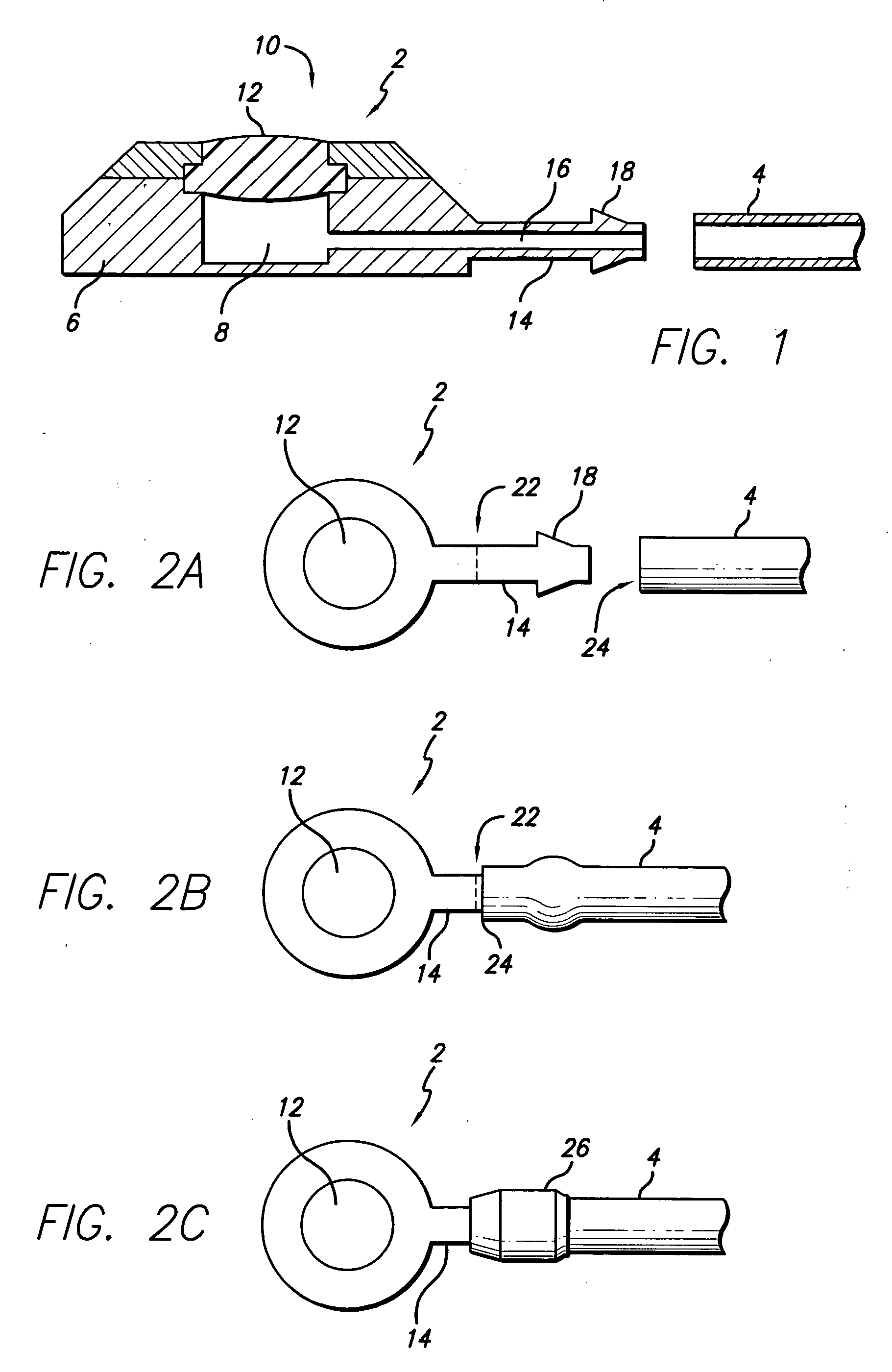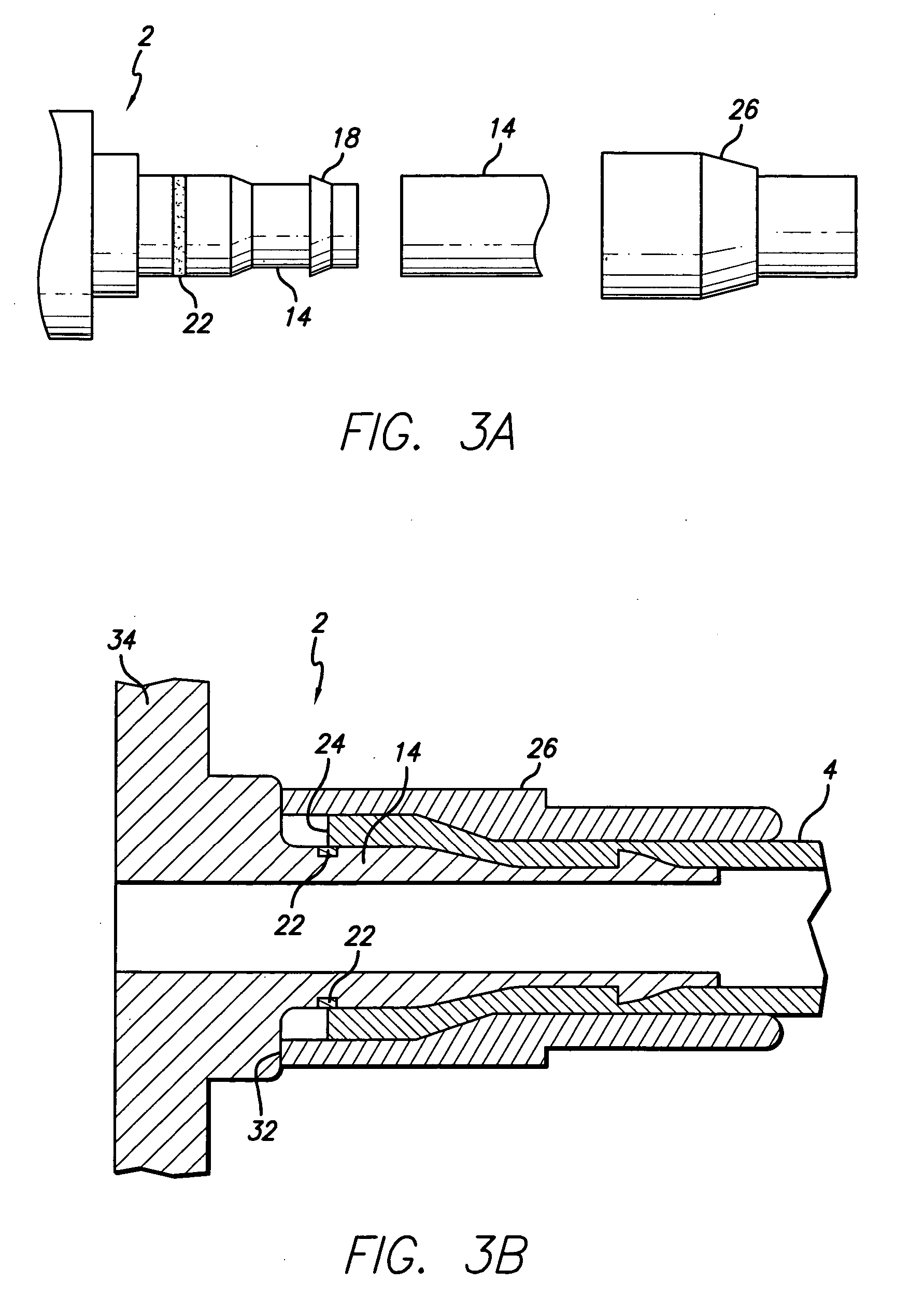Port stem marking for catheter placement
a catheter and port stem technology, applied in the field of subcutaneous implantable access ports, can solve the problems of leakage and failure, catheter connection systems that do not allow visual verification of attachment, and the catheter is difficult to determine the amount of catheter engagement onto the port stem, so as to reduce the implantation time, facilitate surgical procedures, and minimize failure.
- Summary
- Abstract
- Description
- Claims
- Application Information
AI Technical Summary
Benefits of technology
Problems solved by technology
Method used
Image
Examples
Embodiment Construction
[0037] The detailed description illustrates by way of example, not by way of limitation, the principles of the invention. This description will clearly enable one skilled in the art to make and use the invention, and describes several embodiments, adaptations, variations, alternatives and uses of the invention, including what is presently believed to be the best mode of carrying out the invention. Before describing the present invention, it is to be understood that unless otherwise indicated this invention need not be limited to applications in human. As one of ordinary skill in the art would appreciate, variation of the invention may be applied to other mammals as well.
[0038] A single chamber access port is used herein as an example application to illustrate the functionality of the different aspects of the invention disclosed herein. It will be understood that embodiments of the present invention may be applied in a variety of access ports (e.g., access port with two or more flui...
PUM
 Login to View More
Login to View More Abstract
Description
Claims
Application Information
 Login to View More
Login to View More - R&D
- Intellectual Property
- Life Sciences
- Materials
- Tech Scout
- Unparalleled Data Quality
- Higher Quality Content
- 60% Fewer Hallucinations
Browse by: Latest US Patents, China's latest patents, Technical Efficacy Thesaurus, Application Domain, Technology Topic, Popular Technical Reports.
© 2025 PatSnap. All rights reserved.Legal|Privacy policy|Modern Slavery Act Transparency Statement|Sitemap|About US| Contact US: help@patsnap.com



